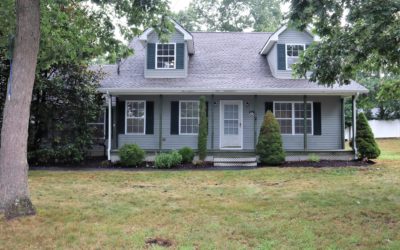
“Let’s break down why more people are using adjustable-rate mortgages and why this isn’t cause for concern.”
f you remember the housing crash back in 2008, you may recall just how popular adjustable-rate mortgages (ARMs) were back then. And after years of being virtually nonexistent, more people are once again using ARMs when buying a home. Let’s break down why that’s happening and why this isn’t cause for concern.
Why ARMs Have Gained Popularity More Recently
This graph uses data from the Mortgage Bankers Association (MBA) to show how the percentage of adjustable-rate mortgages has increased over the past few years:
As the graph conveys, after hovering around 3% of all mortgages in 2021, many more homeowners turned to adjustable-rate mortgages again last year. There’s a simple explanation for that increase. Last year is when mortgage rates climbed dramatically. With higher borrowing costs, some homeowners decided to take out this type of loan because traditional borrowing costs were high, and an ARM gave them a lower rate.
Why Today’s ARMs Aren’t Like the Ones in 2008
To put things into perspective, let’s remember these aren’t like the ARMs that became popular leading up to 2008. Part of what caused the housing crash was loose lending standards. Back then, when a buyer got an ARM, banks and lenders didn’t require proof of their employment, assets, income, etc. Basically, people were getting loans that they shouldn’t have been awarded. This set many homeowners up for trouble because they couldn’t pay back the loans that they never had to qualify for in the first place.
This time around, lending standards are different. Banks and lenders learned from the crash, and now they verify income, assets, employment, and more. This means today’s buyers actually have to qualify for their loans and show they’ll be able to repay them.
Archana Pradhan, Economist at CoreLogic, explains the difference between then and now:
“Around 60% of Adjustable-Rate Mortgages (ARM) that were originated in 2007 were low- or no-documentation loans . . . Similarly, in 2005, 29% of ARM borrowers had credit scores below 640 . . . Currently, almost all conventional loans, including both ARMs and Fixed-Rate Mortgages, require full documentation, are amortized, and are made to borrowers with credit scores above 640.”
In simple terms, Laurie Goodman at Urban Institute helps drive this point home by saying:
“Today’s Adjustable-Rate Mortgages are no riskier than other mortgage products and their lower monthly payments could increase access to homeownership for more potential buyers.”
Bottom Line
If you’re worried today’s adjustable-rate mortgages are like the ones from the housing crash, rest assured, things are different this time.
And, if you’re a first-time homebuyer and you’d like to learn more about lending options that could help you overcome today’s affordability challenges, reach out to a trusted lender.
To view original article, visit Keeping Current Matters.
Will We See a Surge of Homebuyers Moving to the Suburbs?
With the ongoing health crisis, it’s no surprise that many people are starting to consider moving out of bigger cities.
Homeownership Rate Continues to Rise in 2020
There are many reasons why the homeownership rate in this country is rising, and one of the key factors is historically-low mortgage rates.
Just Listed! 36A Miller Avenue
Another listing by Reade Stewart! This 3 bedroom country colonial home is waiting for you! Call Reade today to schedule a private viewing.
Guidance and Support Are Key When Buying Your First Home
If you’re not sure where to begin or you simply want help in figuring out how to save for a home, we are here to help you! Call us today 🙂
Three of the Latest Reports Show Housing Market Is Strong
The residential real estate market is remaining resilient as the country still struggles to beat the COVID-19 pandemic.
A Real Estate Pro Is More Helpful NOW than Ever
A recent study shared by NAR notes that both buyers and sellers think an agent is more helpful than ever during the current health crisis.








.jpg )



